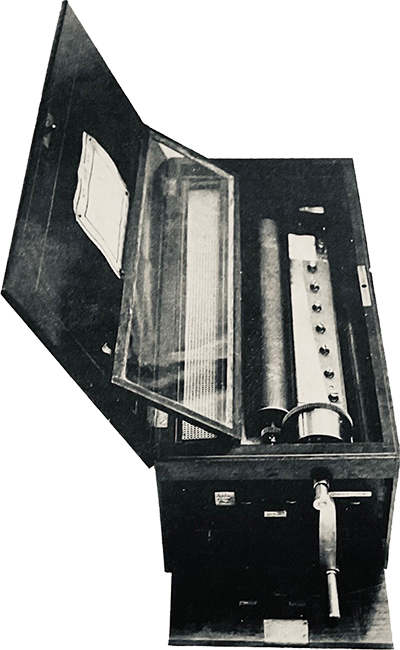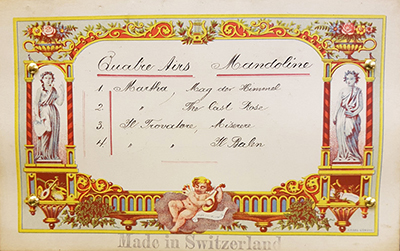|
===Second Part=== (with many figures) Music boxes by Métert and Langdorff
Die Gesamtanzahl dieses Abschnittes beträgt / Total: Spieldosen Siehe unbedingt auch den / See also the ===First Part=== Sublime Harmony. Many music boxes have a Sublime Harmony arrangement, and that is how Englishman Baker spelt it. He avoided the use of this Paillard-attributed description in his earlier years, as did Langdorff. (Bulleid, Technology, p. 6-7) Large and very large movements. Baker-Troll are generally associated with large and very large movements – one illustrated in the Chapuis book is an interchangeable driven by four springs. It has a drum, bells, castanet, 40-key organ and two zithers and is on a stand with drawers for ten cylinders. (Bulleid, Technology, p. 7) [1] Drum, bells, and castanet “... as well as one with a drum, bells, and castanet, both with 13“ (33 cm) cylinders.” (Bulleid, Technology, p. 7) No 13849. “The simpler type of tune sheet was widely used, for example on Serial No. 13849 with 11“ (28 cm) cylinder playing eigth airs.” (Bulleid, Technology, p. 7) Tremolo Harp box, similar as 13849. “It was also used on a Tremolo Harp box, ...” (Bulleid, Technology, p. 7)
|






